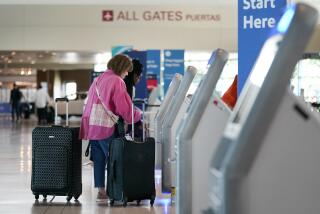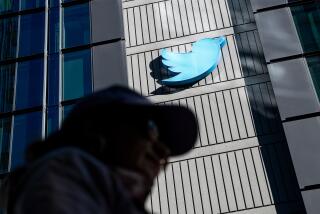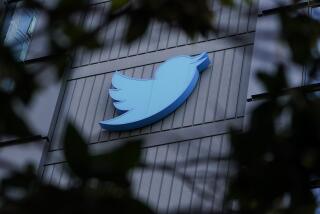Twitter is the new social media darling for travelers, solving problems and saving money
When I’m in a travel bind, whether it’s before a trip or at the airport, I often use Twitter to contact the airlines. That social media outlet can lead to better service and sometimes even savings.
Anthony Berklich, founder of the travel platform Inspired Citizen, has used Twitter for his travel conundrums too, often using direct message (more on that below).
His most extreme example: The cab that was taking him to the airport got into an accident. He tweeted what happened to American Airlines (@AmericanAir), the carrier he was to be flying.
American, he said, replied within 10 minutes and asked for a picture of the cab. Berklich sent back a photo, and American rebooked him on a later flight with no penalty.
On another trip, Berklich realized weather would delay his flight home from Rome. He tweeted to Delta (@Delta) about the weather issue and suggested a flight from Milan instead. Delta rebooked him at no extra charge.
When you contact an airline using its public Twitter channel, most airlines will follow you back on Twitter and ask you to follow them back so you can direct message, or DM.
Yes, it takes whiners off the public channel (and protects the airline’s brand), but it also protects your personal information.
Unlike regular Twitter messages, a DM isn’t limited to 140 characters. Instead, you have up to 10,000 characters to describe a travel problem.
Taking things a step beyond, Delta has added a button on its Twitter page to make sending a direct message easier: You don’t have to follow each other to send a DM.
Most major U.S. carriers monitor social media 24 hours a day every day, which helps if you need assistance in the middle of the night.
If problem resolution doesn’t entice you onto Twitter, deals may.
Berklich follows airlines for deals and also looks to Scott Keyes (@smkeyes) of Scott’s Cheap Flights for deals and steals. Thanks to Keyes, Berklich found a round trip from Miami to Brazil for $75 and a nonstop round trip from New York to Belgrade, Serbia, for $164.
“Sometimes it’s a mistake or [sometimes it’s] certain dates,” Berklich said.
Keyes got started after he stumbled on a great airfare. “In 2013, I got the best deal I’ve ever bought in my life: New York City to Milan, direct, for $130 round trip,” he said in an email. “When I got back … friends asked me if I could let them know next time an incredible deal like that popped up.”
The $130 NYC-Milan deal was a mistake fare on United. Those erroneous fares — an airline sells seats at a price it didn’t intend to — “pop up every once in a while,” he said. “Some stick around for a day or two; others are gone in a half-hour.”
How does he do it? “No real secret sauce per se to finding mistake fares, mostly just keeping your ear to the ground, monitoring Twitter and message boards and constantly searching different routes.”
Keyes also maintains email lists, which include 13,000 premium subscribers and 117,000 free subscribers.
The free subscribers see only about one-third of the deals he emails to the premium subscribers, and those are the deals Keyes tweets.
If you don’t want to pay for a premium subscription, try following Keyes on Twitter.
John DiScala, founder of travel site JohnnyJet.com, and Brett Snyder, the Cranky Concierge, use Twitter for quick communication, of course, but they also follow deal tweeters. Among the Twitter feeds worth following are: @JetBlueCheeps (a favorite of DiScala’s), @airfarewatchdog, @TheFlightDeal, @Hopper_Deals and @ExitFares.
Adding these to your follows on Twitter just could subtract from how much you pay for an airfare.
More to Read
Sign up for The Wild
We’ll help you find the best places to hike, bike and run, as well as the perfect silent spots for meditation and yoga.
You may occasionally receive promotional content from the Los Angeles Times.






